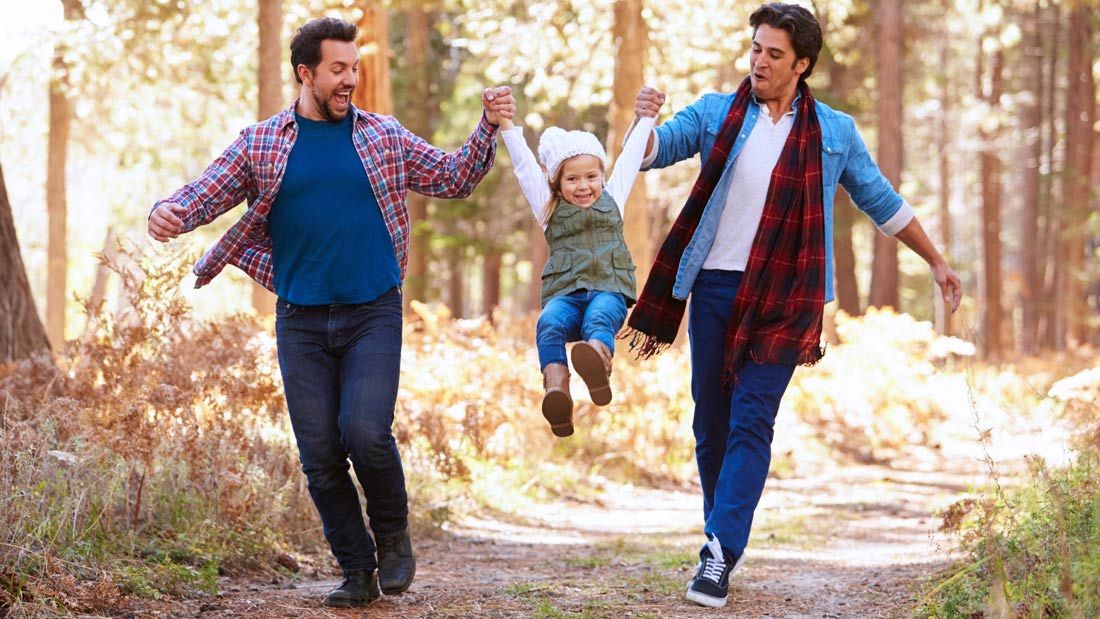Vegan diet and healthy bones

Children grow because their bones are growing, becoming larger and stronger. Even though vegan children grow and develop at the same rate as non-vegans, parents of vegan children are often challenged on the subject of healthy bones. Here’s everything you need to know.
In early childhood, long bones in your child‘s arms and legs grow faster than their trunk and it stays that way until puberty. When sex hormones start flooding their system, the trunk accelerates its growth while the long bones slow down. In girls, the greatest increases in bone mass occur between the ages of 12–15 years. In boys, it’s a bit later – 14–17 years. This rapid bone growth then slows dramatically by the age of 16–18 in women and 17–20 in men.
For a bone to grow and be healthy it needs a good supply of energy, protein, bone-forming minerals such as calcium, phosphorus, magnesium, zinc, copper and boron, as well as vitamins C, D and K.
The two main minerals in the bones and teeth are calcium and phosphorus. We need both in our diet for our bodies be able to use them well. Low calcium and high phosphorus intake and vice versa can hamper their absorption (Bonjour, 2011). There’s plenty of phosphorus in most diets and it’s very unlikely that you or your child would lack it. When it comes to calcium, we need to make sure we and our children eat enough.
And that’s where children are at an advantage – in infancy and early childhood, children absorb up to 60 per cent of the calcium they eat (Fomon and Nelson, 1993; Institutes of Health, 2011). The rate of absorption slowly decreases as we age, and by adulthood it is, on average, about 30 per cent (Jackman et al., 1997; Bronner and Abrams, 1998).
The calcium needs of breastfed babies are met by their mothers’ milk, while infant formulas contain even more calcium than human milk to compensate for the possibility that not all of it is absorbed (Abrams, 2003).
While a sufficient intake of calcium is a must for healthy bones and teeth, the intake of milk (or other dairy products) is not. As two comprehensive studies on dairy and bone health revealed, there isn’t any convincing data that would show a truly beneficial effect of dairy on children’s bone health (Lanou et al., 2005; Wallace at al., 2020). And another recent study found no connection between dairy consumption and a reduced risk of fractures in children (Allison et al., 2020).
The only studies where dairy had a positive impact on bone health were those where the participants had very low (insufficient) calcium intakes to start with – any calcium-rich foods would have made a difference (Iuliano and Hill, 2019). Parents are usually told to give children dairy since it’s a convenient source of calcium but this is neither necessary nor natural. As with every species of mammal on our planet, nature intended us to stop drinking milk after weaning. You may find it reassuring that plant milks, such as fortified soya (all types except organic), rice, oat, coconut and almond milks all provide very similar amounts of calcium as cow’s milk, and we absorb about the same amount from them. They are also much lower in ‘bad’ fats, have no cholesterol and are fortified with the important vitamins D and B12.
How much calcium should children get and what are the best sources?
Both, very low and very high intakes of calcium are dangerous – low intakes simply because there’s not enough building material and high intakes because too much calcium interferes with the other minerals essential for healthy bones. A recent study showed that children whose intakes are above 2,500 milligrams of calcium a day actually have weaker bones (lower mineral density) than children who receive less (Pan et al., 2020).
To grow and develop in the best possible way, children should receive these amounts of Calcium daily:
| 0-12 months | 425 mg |
| 1-3 years | 350 mg |
| 4-6 years | 450 mg |
| 7-10 years | 550 mg |
| 11-14 years | 1,000 mg (males) 800 mg (females) |
| 15-18 years | 700 mg (males) 700 mg (females) |
The best plant sources of calcium are: Kale, collard/spring/mustard greens, broccoli, cabbage, sesame seeds and tahini (sesame seed paste), almonds, tofu (made with calcium sulphate), tempeh, beans, dried figs, plant-based milks fortified with calcium, fortified vegan breakfast cereal (eg Ready Brek), wholemeal bread, butternut squash
We absorb the most calcium from leafy greens, such as kale, collard, spring and turnip greens, broccoli, Chinese cabbage, and bok choy – about 50 per cent of the calcium these foods contain. We absorb about 30 per cent of calcium from calcium-set tofu and most fortified plant milks – this is the same amount as what is absorbed from cow’s milk. From other plant foods, such as beans, almonds, tahini, figs, and oranges, we absorb about 20 per cent of calcium.
It’s best to combine all these foods in your child’s diet so they have several calcium sources throughout the day.
A word of caution – children may be eating all the above foods and still not get enough calcium if they only eat small portions. That’s why it’s best to give your child calcium-fortified plant milks and yoghurts to top up their intake.
Vitamin D is important for your body to be able to regulate calcium and phosphorus levels in the blood. Without vitamin D, calcium cannot be built into the bones properly, so we need to make sure we get enough!
Vitamin D is known as the ‘sunshine vitamin’ because our skin makes it when exposed to sunlight. In the UK, from early April to the end of September, we get most of our vitamin D from sunshine. On a sunny day, you can make all the vitamin D you need by exposing your face, arms and legs for 10 to 40 minutes twice a week. The weaker the sunlight, or the darker your skin, the more exposure you need. Bear in mind that sunscreens, clothing and glass block vitamin D synthesis.
The lack of sunshine from October to April (in the Northern Hemisphere) makes it impossible for our skin to make enough vitamin D, so we need a supplement. This applies even to those of us who spend their days outside – it’s just not enough in the colder months.
All babies up to 12 months of age should be given a vitamin D supplement (drops) unless they are formula-fed. That’s because all infant formulas have to contain vitamin D by law.
Continue giving vitamin D supplement to your toddlers and older children too because we usually protect their skin with sunscreen or clothing so their skin may not be able to make enough. They should take a supplement at least from October to April if not throughout the whole year (Amit, 2010; Baroni et al., 2018). A daily dose of 10 micrograms (400 IU) is enough for children of all ages.
There are two types of vitamin D, both can be used by the body, but do check the source to make sure it’s vegan. Vitamin D2 (ergocalciferol) is always vegan but vitamin D3 (cholecalciferol) can be of animal origin. There are many vegan vitamin D3 supplements available.

During childhood and teenage years, bones don’t just grow, they also become denser – more calcium is built in and bones become harder as a result. By young adulthood, the bones will have achieved the maximum density, called peak bone mass.
An unhealthy diet and sedentary lifestyle can lead to lower bone density, making children (and later adults) more likely to suffer a fracture.
While calcium and vitamin D intakes are important, it’s the overall diet that matters because some foods are better for the bones than others. Studies show that a diet rich in fruit and vegetables, calcium-fortified milk alternatives, nuts and grains is excellent for bone health (Movassagh et al., 2018). It’s because these foods naturally contain nutrients important for bones – protein, calcium, potassium, magnesium, vitamins A, C, K and folate (Movassagh et al., 2018).
Research on diets and bone health shows that a well-balanced vegan diet can ensure strong, healthy bones and may even be superior to the Western ones (Knurick et al., 2015; Hsu, 2020). Just bear in mind that a vegan diet doesn’t automatically provide all the vital nutrients – a little bit of planning has to be put into it but with our guidance, it’s a walk in the park!
According to a major review by the US National Osteoporosis Foundation (Weaver et al., 2016), bones need a good protein supply and plant protein does the job better than animal protein, which produces more acid in the body. The authors also concluded that fruit and vegetables have a positive effect on the bones, while carbonated (fizzy) drinks may have a negative effect. Lastly, they highlighted how important physical activity is for bone health, growth and development – bones need to be stimulated to grow and become stronger.
Children should be physically active for at least an hour every day. That can mean any activity making children move around supporting their own weight – that is what stimulates their bones! It can be playing with their friends, walking to school (or anywhere really!), playing on the playground, chasing each other around the house, PE at school, dance classes or ball games.
Swimming and cycling are excellent sports but because you don’t fully support your own weight when doing them, they don’t count as bone-building.
Perhaps surprisingly, daily fruit consumption helps children increase their bone mineral density, especially when it comes to achieving the highest peak bone mass during adolescence (Dreher, 2018). It turns out that diets rich in fibre, such as fruit pectin, can improve calcium absorption and tone down bone loss.
A UK study of teenage boys and girls found that those who ate more fruit had higher bone mineral content (Prynne et al., 2006). From the study results, it seems that at least three servings of fruit a day would be ideal to support children’s bone health.
Another study came to a very similar conclusion – adolescent girls eating more than three servings of fruit and vegetables a day had healthier and stronger bones and lost less calcium in urine than girls consuming fewer portions (Tylavsky et al., 2004).
Interestingly, a Chinese study brought almost identical results – higher fruit intake in teenagers led to higher bone mineral density, with the best results seen with three to four portions a day (Li et al., 2013).
While it’s unclear why fruit has such a positive impact on bone density, it’s been suggested that it might be thanks to its alkali-forming components, increasing calcium absorption and reducing calcium losses. Another reason why fruit is so bone-friendly is that it contains a lot of nutrients essential for healthy bones, such as potassium, magnesium, vitamins C and K.
After all, fruit is one of the most natural foods for us, so it shouldn’t be too surprising that it’s also good for our bones!







